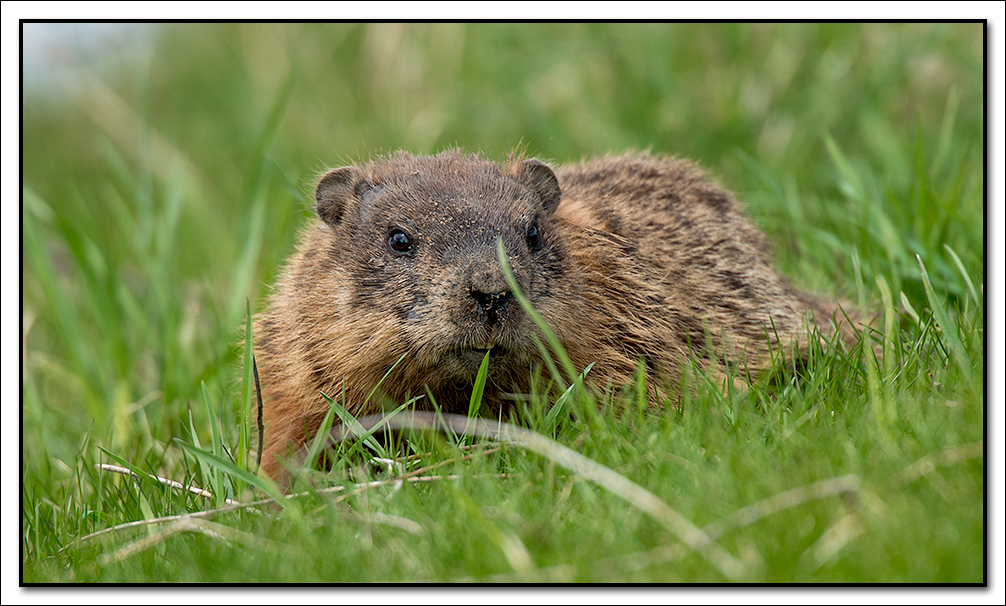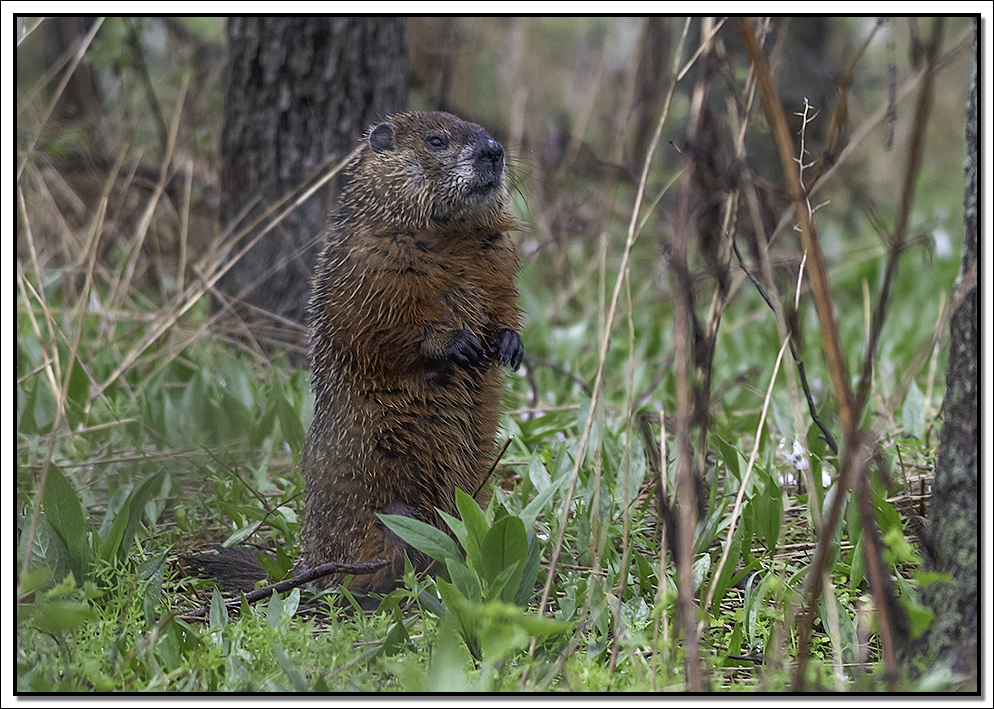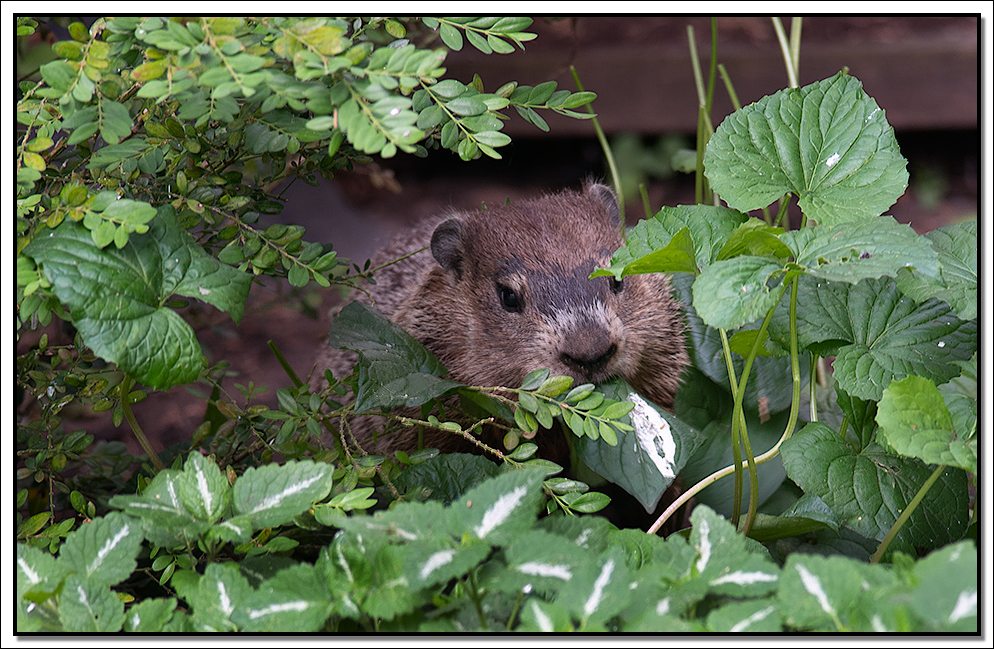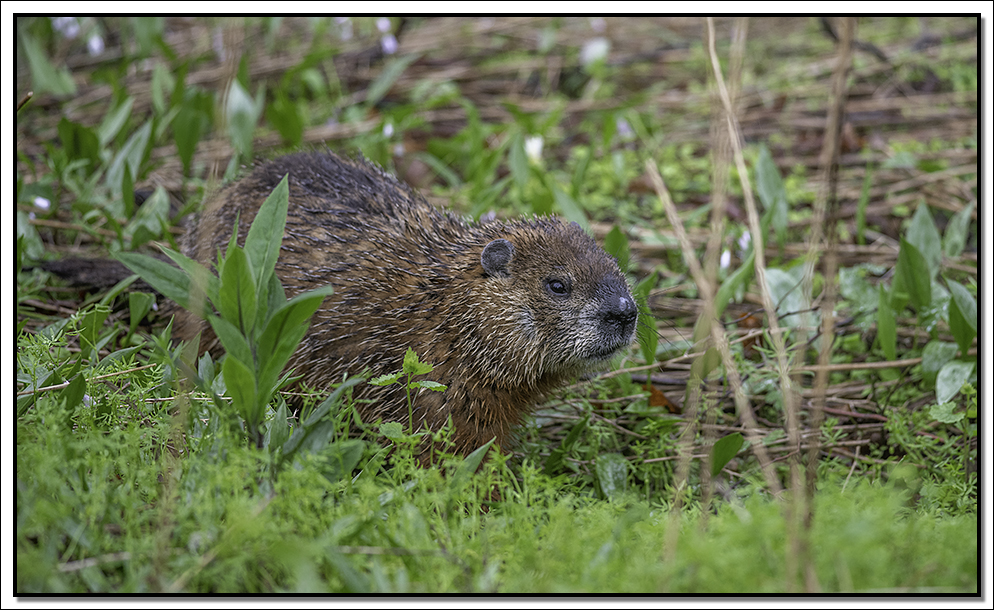Groundhog
Groundhog (Marmota monax)
Groundhogs are rodents also known as Woodchucks. As there scientific name suggest, they belong to the genus of marmots. They are widely distributed across North America where they prefer open areas such as fields, clearings, open forests, and rocky slopes. They avoid damp or swampy areas, but can be found along shorelines or rivers edges.
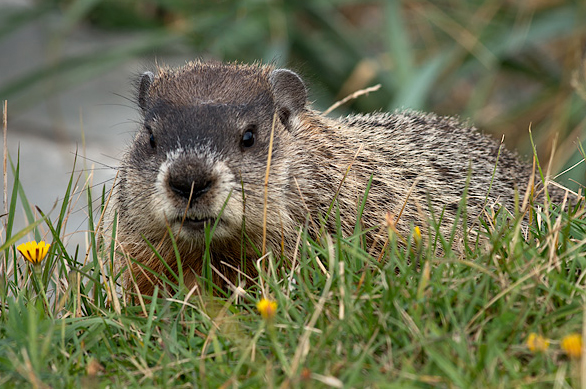
Because woodchucks are burrowing mammals, their feet have sturdy claws and their legs are thick and strong. Their forefeet, the principal ones used for digging, have four well developed claws and their hind feet have five. Summer homes are often in the middle of pastures and meadows. They build extensive burrows that usually have a main entrance, one or more peepholes for added safety from enemies, and separate toilet and sleeping chambers.
Groundhogs spend much of their waking hours eating and sunning themselves. We have had one staying in our backyard for awhile where it would dine in our garden and feast on the fallen seeds from the birdfeeders. We would often seen him sunning himself on our back deck, hence we nicknamed him Deckhog.
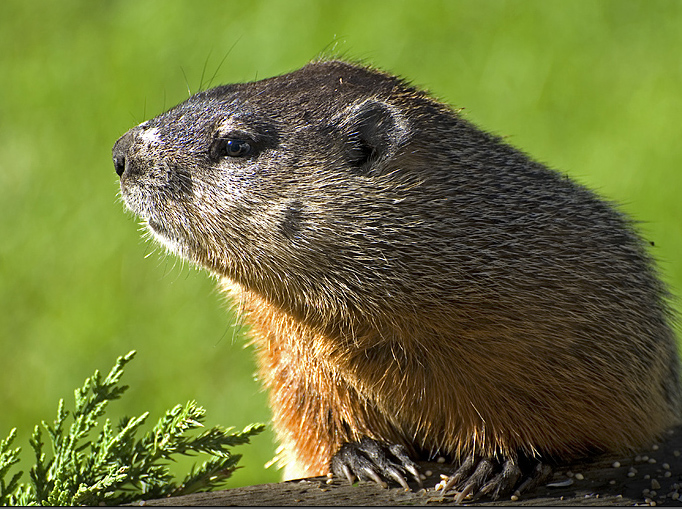
Groundhogs are not usually welcome in most backyards for good reason. They can decimate your garden as they voraciously feed on your flowers and plants.
Groundhogs don’t stray too far from their burrows when feeding or sunning. This is because they are not very fast runners and want to make sure they are close enough to escape from predators such foxes, coyotes, dogs and humans.
Groundhogs are true hibernators and build winter burrows, usually in wooded or bushy areas. They dig deep holes that are below the frostline. In preparation, woodchucks grow enormously fat towards the end of the summer. To survive the winter, they are at their maximum weight shortly before entering hibernation. When in hibernation, their body temperature drops, their heartbeat and breathing rate slows. By February, they will have lost half their body weight. They are the major hole digger in much of North America. All kinds of wildlife take advantage of abandoned groundhog holes including foxes, raccoons, rabbits and snakes.
